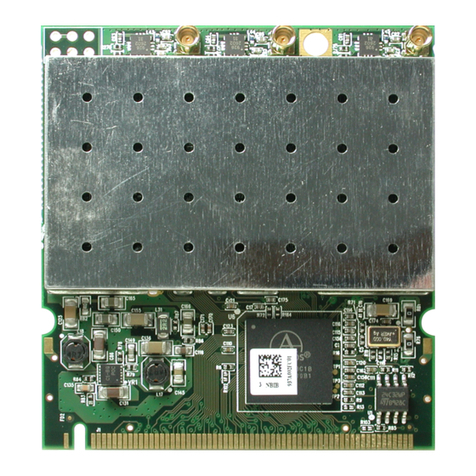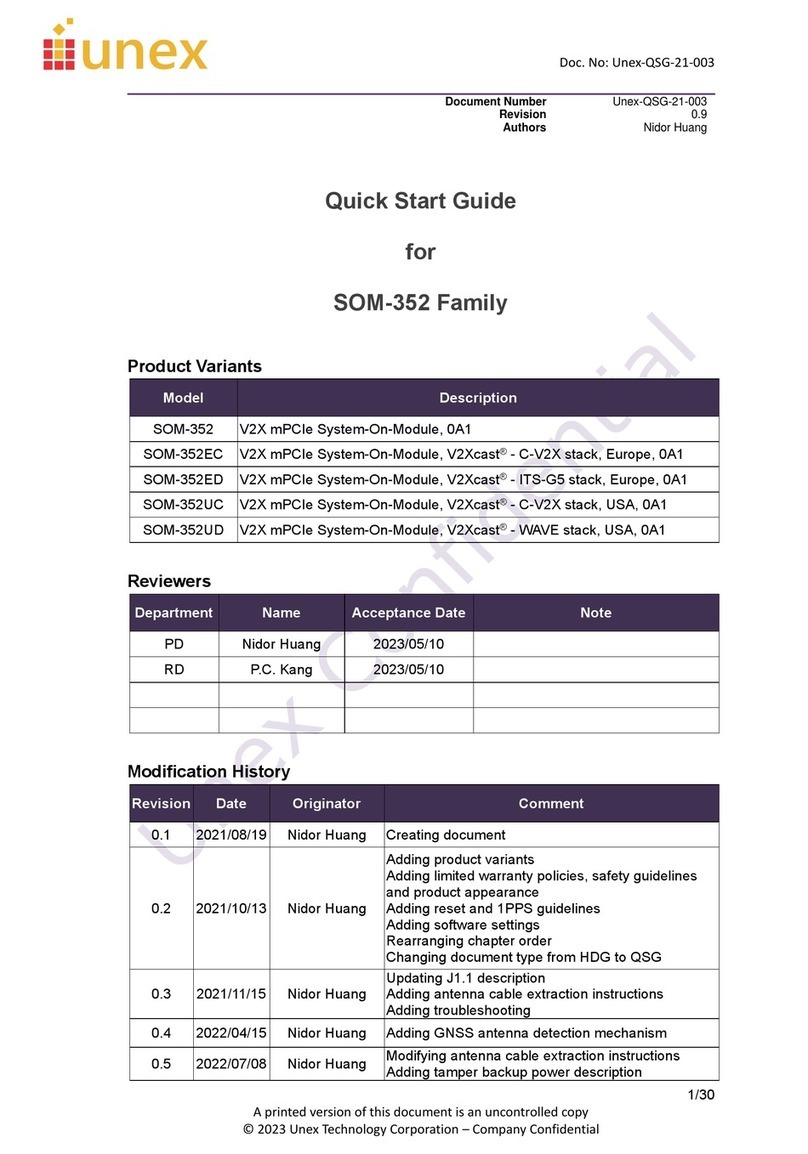Doc. No: Unex-QSG-21-003
2/23
A printed version of this document is an uncontrolled copy
© 2021 Unex Technology Corporation – Company Confidential
TABLE OF CONTENTS
1. Objective...................................................................................................4
2. Reference .................................................................................................4
3. Limited Warranty Policy ............................................................................4
4. Safety Guidelines......................................................................................5
5. Product Appearance .................................................................................5
6. Functional Block Diagram.........................................................................6
7. Electrical Characteristics ..........................................................................7
7.1. Absolute Maximum Ratings .................................................................................. 7
7.2. Recommended Operating Conditions................................................................... 7
7.3. Power Consumption.............................................................................................. 8
8. I/O Interfaces ............................................................................................9
8.1. Antenna Connectors ............................................................................................. 9
8.2. Mini PCIe Card Pinout..........................................................................................11
8.3. I/O Cable Pinout.................................................................................................. 12
8.4. DIP Switch........................................................................................................... 13
9. Design-in Guidelines...............................................................................15
9.1. Power Line Traces .............................................................................................. 15
9.2. Power Sequence................................................................................................. 15
9.3. Brown Out ........................................................................................................... 16
9.4. Grounding ........................................................................................................... 16
9.5. USB Data Lines................................................................................................... 16
9.6. Serial Port ........................................................................................................... 17
9.7. Reset ................................................................................................................... 17
9.8. 1PPS ................................................................................................................... 17
9.9. Tamper Detection (Optional) ............................................................................... 19
9.9.1. Production Mode................................................................................... 20
9.9.2. Test Mode ............................................................................................. 20
9.10. Thermal Management ......................................................................................... 20
10. Dimensions and Weight ..........................................................................21
10.1. Component Keep Out Area ................................................................................. 22
11. Software Settings....................................................................................23
11.1. Verifying the Integration with a Host System ...................................................... 23
11.1.1. Linux ..................................................................................................... 23
LIST OF FIGURES






























